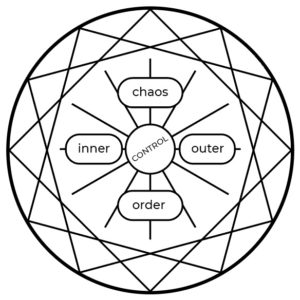Planetary Movement
By Dennis Klocek 2 min read
In order to build a different kind of model for el nino it is useful to describe the ways in which a planet can be seen to be moving across the Pacific ocean. The motions of the outer planets from Mars through Jupiter, Saturn, Uranus, Neptune and Pluto can be projected onto the Pacific basin. The motions created as these planets move from west to east in their orbits are described by astronomers as degree increments of motion in arc. Motion in arc is the movement of a planet through the celestial equator. It is recorded in degrees of arc.
A planet moving from west to east across the Pacific is said to be transiting the Pacific while moving in direct motion. The animation depicts Mars moving in direct motion. Planets further away from the earth would transit the Pacific much more slowly than planets closer in orbit to the earth. The animation depicts Mars transiting the Pacific in one year while during that same year Jupiter would only move a few degrees of arc in its transit during the same time period.
Because of relationships in the relative positions of the orbits between a planet, the Earth and the Sun in a given year an outer planet will go into an apparent backward period of motion in arc known as retrograde motion. The planet is still moving in arc but it is seen to be moving east to west or backwards (retrograde) to its normal motion. The animation depicts a Mars retrograde period of motion in nino 3.4. This period of retrograde motion is also known as a loop.
This animation compares the motion in arc increments between a Mars loop and a Jupiter loop during the same time period of five months. The Mars loop covers about 12 degrees of arc in a month while the Jupiter loop covers about 3 degrees of arc in about 5 months.
In the following sequences the migration of the cold and warm water in the Pacific in the canonical el nino will be layered into the motion in arc data of outer planets positioned across the Pacific. The first sequence will be of the canonical el nino seen against a background of planetary motion placing an outer planet approximately every 20 degrees of arc. 20 degrees of arc is two thirds of a 30 degree sign or constellation. There are nine such placements possible across the Pacific basin which covers about 180 degrees of arc at the equator.
Read how Planetary Movement affects the el nino, next.

Dennis Klocek
Dennis Klocek, MFA, is co-founder of the Coros Institute, an internationally renowned lecturer, and teacher. He is the author of nine books, including the newly released Colors of the Soul; Esoteric Physiology and also Sacred Agriculture: The Alchemy of Biodynamics. He regularly shares his alchemical, spiritual, and scientific insights at soilsoulandspirit.com.
Similar Writings
Soul Qualities of the 12 Personality Archetypes
In Part 6 of our Soul Course, Dennis shows us how how to use the twelve personality archetypes to begin to see into the biographical stories of people in our lives. The soul dynamics of control in each archetype will be explored through the Artist/Agent and Activist/Hermet polarities. Understanding these dynamics allows us to heal…
The Alchemical Worldview
Esoterically the central task of the human being is to achieve what is known as the second birth, or what is known to students of Rudolf Steiner as the birth of the “I” being. Our first birth is into a body of flesh. This is given to us by nature working through our parents. The…

